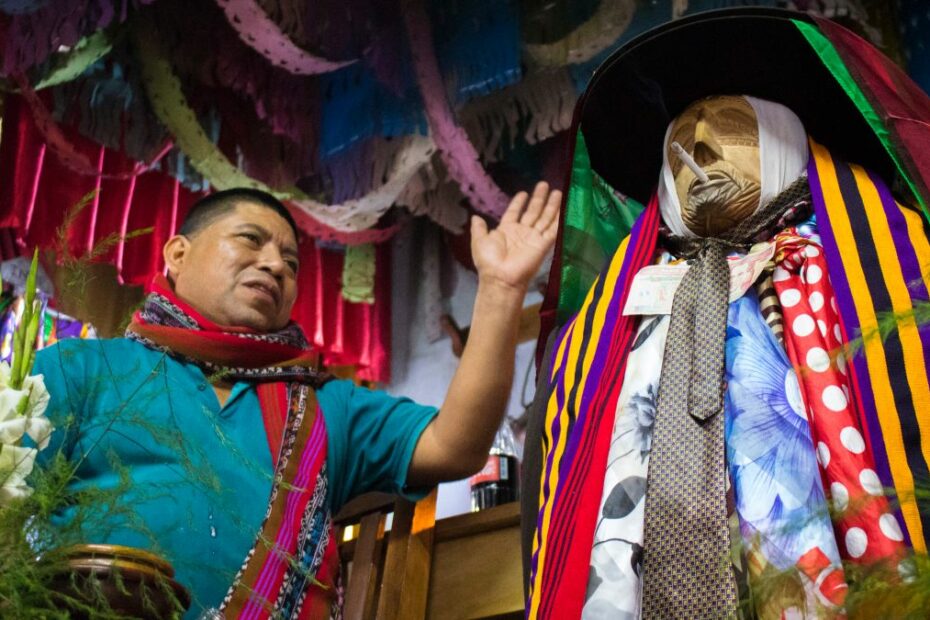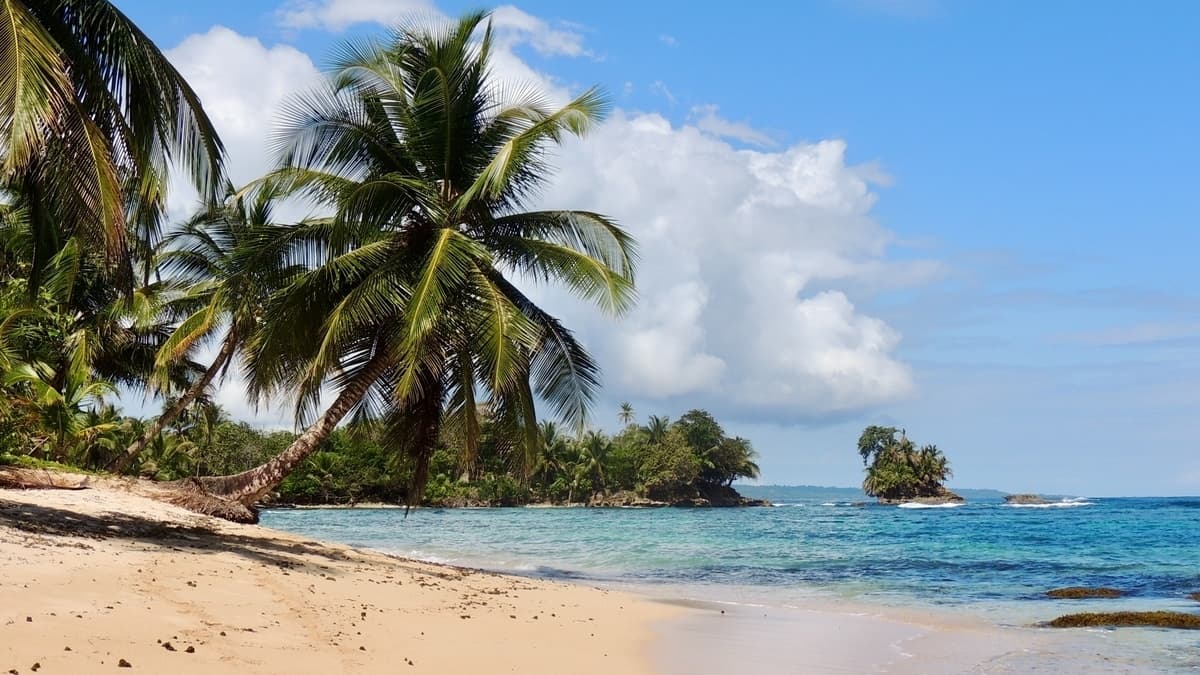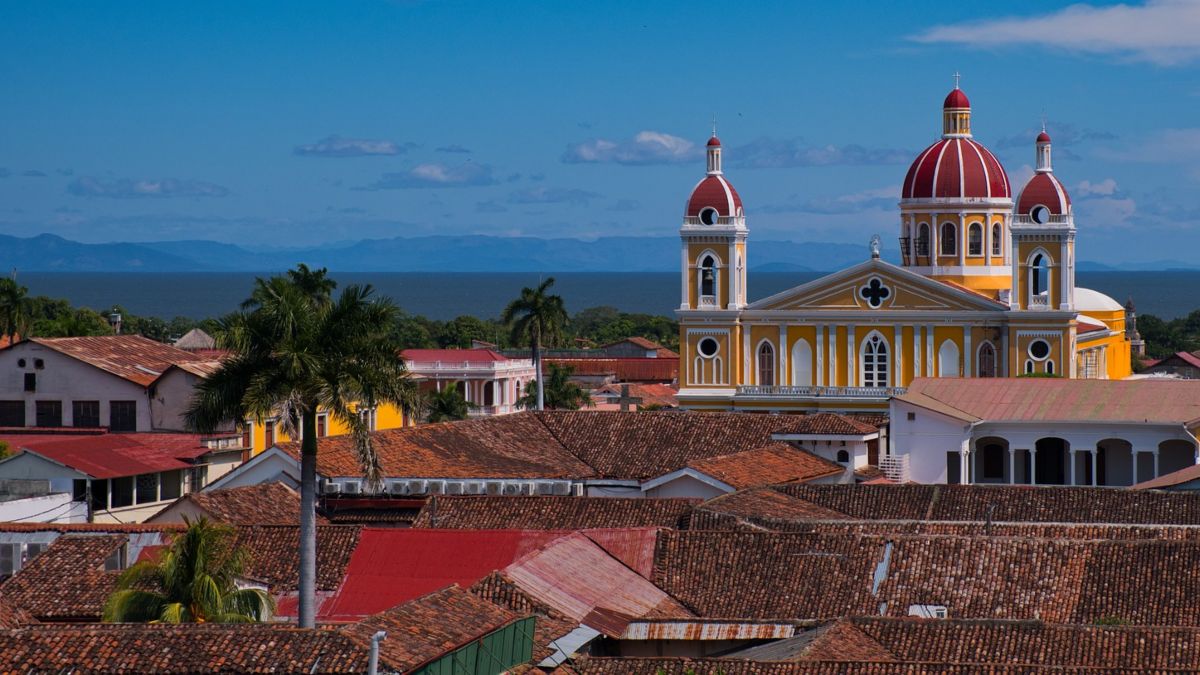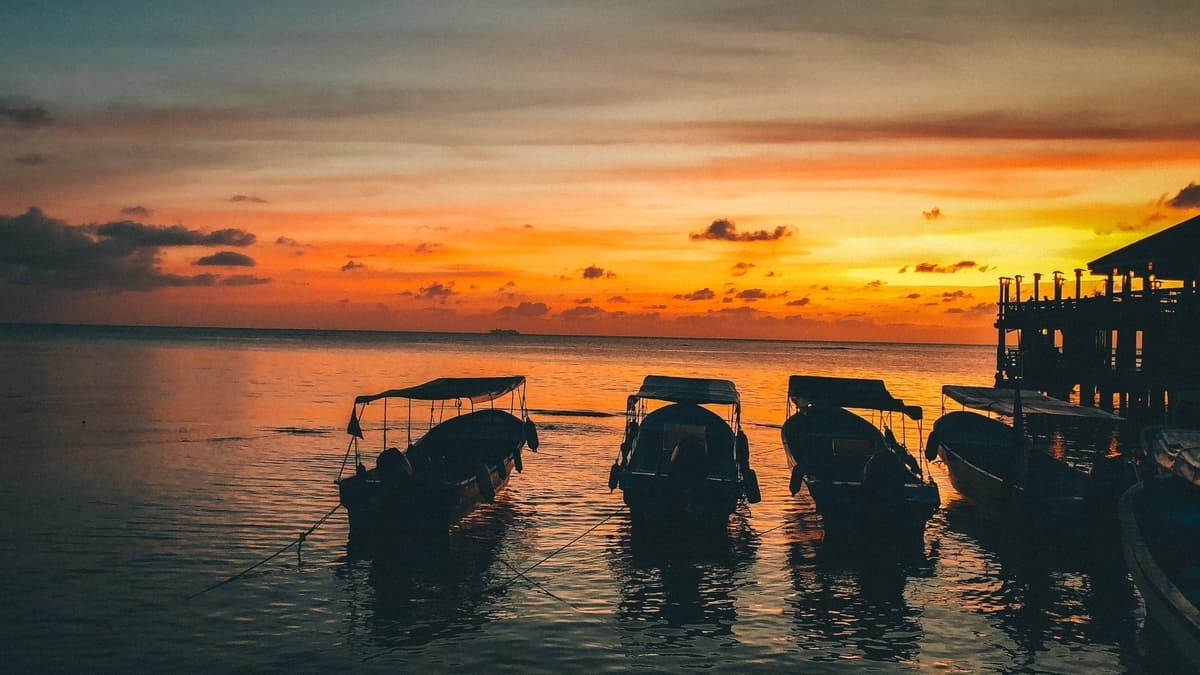Jake Stamp describes how he and his friend won the 2004 World Series of baseball with divine help from Maximon, a local deity.
In the spring of 2004, the upcoming baseball season was approaching. In Antigua’s central square I bumped into another American, a friend of mine named Billy who happened to be a massive fan of the Boston Red Sox.
Some baseball history
As any baseball fan knows, in 2004 the Red Sox had last won the World Series in 1918. They had suffered many close defeats, including the previous year.
2003 stung even more, because defeat came at the hands of arch-rivals the New York Yankees. Aaron Boone launched a home run in the bottom of the 11th inning, ending Boston’s title hopes yet again. I was aware of all this as Billy outlined his plan to make sure Boston would win the World Series. Or failing that, ensure the Yankees would not – always the second-best result to a season for a Red Sox fan.
All he needed was some divine intervention.
San Andres Itzapa and Maximon
At first glance, the small town of San Andres Itzapa in the western highlands of Guatemala is typical. Concrete and cinder block buildings. Bright-colored awnings hang everywhere, advertising Pepsi, Gallo beer, cell-phone companies, and agricultural products.
Women walk along the main road with baskets of fruits and vegetables balanced on their heads. Small kids dance around their feet as they totter along. Men in cowboy or baseball hats wear loose shirts and jeans. They all have machetes hanging from their belts. Cars are almost all Japanese pickup trucks or small sedans.
Behind the gas station, a thick cloud of black smoke rose from a compound. A steady stream of men and women gravitated towards the cloud. They were on their way to pay homage to the local deity known as either Maximon or less often, San Simón.
Maximon is a traditional Mayan deity that, at least in some aspects, predates the Spanish conquest.
He’s often depicted as a mustachioed man dressed in a black suit with a wide-brimmed hat. Maximon acts as an intercessor between the spiritual and temporal worlds. He does not conform to the dualistic Christian model of good against evil, angel versus demon. Rather, he is in many ways both. He can intervene to bring the petitioner success in love or business. And he can also intervene to bring harm or misfortune to a third party.
A third party like the New York Yankees.
View this post on Instagram
Candles, cigars, and herbs
The Temple of Maximon comprises a small chapel inside an expansive walled compound. The temple provides parking, with space for around thirty cars.
We saw several fires burning in front of the temple, the source of the smoke coming from behind the gas station. The priests of Maximon do not wear distinctive clothing or head coverings. They dress like all men in the Guatemalan Highlands. Blue jeans, cowboy boots, and either t-shirts or faded button-down shirts.
We made our way to the chapel, skirting the flames and the smoke. The priests circled the fires, chanting in Spanish and the local Mayan tongue, Kaq’chikel. The devout looked on.
Before entering, we purchased several candles of varying colors. Blue and red for Billy in honor of the Red Sox. Green and yellow for me to call Maximon’s attention to the cause of Oakland. On the drive to Itzapa, I reminded Billy the Oakland A’s had only won four World Series titles since 1970.
“Shut up dude, remember why we’re here”, he replied.
We each purchased several black candles, too. The correct colors to place a curse on your enemy, according to the elderly saleswoman.
We also bought a few oversized cigars, and a bundle of herbs tied together with string. The saleswoman insisted on this.
Paying homage
The chapel of Maximón looks familiar to those who have visited a Catholic church. There are differences though. Instead of pews, there are tables with candles burning. There is no effigy of Christ. No crucifix.
What you find is a one-meter statue of a man sitting in a rough-hewn wooden chair. He’s in a black suit with a Mayan-weaved shawl draped over his shoulders. He has black Homburg hat on and in his right hand a large black staff or walking stick. Around his feet are bottles of liquor and Gallo beer. Also packs of cigarettes and plenty of cigars.
A line of worshippers forms to the left, waiting to climb the stairs up to the altar. There they will give their gifts in hope of favors granted or rivals defeated.
Billy and I lit our candles and went back outside, still unsure what do with the bundle of herbs.
The most important ingredient for cleansing – Quetzalteca
As we were leaving, a priest asked us if we wanted to have our sins cleansed. When we expressed uncertainty, the priest pointed at our herbs. We already possessed half the required ingredients for a cleansing ceremony, he said.
And the other ingredient?
Booze, he replied. You need to go to the liquor store and buy four “octavos de Quetzalteca“.
An octavo is a small bottle filled with 1/8 of a liter of Quetzalteca, a spirit distilled from sugar cane. The distilling process doesn’t meet the standards to call the product rum. An octavo costs less than a dollar.
View this post on Instagram
Cursing the New York Yankees costs extra
We told the priest we also wished to place a curse on the Yankees this year.
“All the Yankees?” he asked, taken aback.
We assured him we only wanted to curse the baseball team, not our entire home nation.
Nodding at this more realistic goal, he agreed to proceed, but there was a caveat. We were now going to need six octavos, and he would need payment of twenty quetzales. Less than three bucks American.
There was a liquor store in an adjoining building to the chapel, which we had somehow missed.
I bought more candles to add to our pile of huge cigars. These were for the fire our priest was building for the Yankee-cursing ceremony.
Let the ceremony commence
We left the store and returned to him. He took one octavo and downed it in one like water. He then took the second octavo, and poured it onto a pile made with our cigars and candles, and set it alight. As one might imagine, a fire doused with a spirit smelling and tasting like jet fuel burned fast.
Our priest circled the fire several times, chanting.
He paused here and there to spit more Quetzalteca onto the fire, and to drink more. He stirred the blaze with an iron rod, all the while continuing to chant and mumble. Unsure what else to do, Billy and I nipped at our own octavos and watched the spectacle before us.
View this post on Instagram
Now it’s our turn
As the fire died down, the priest proclaimed it was time to cleanse our sins.
He drank another octavo and misted it all over my face by vibrating his lips and blowing at the same time. With my face moist with rotgut, he shouted and thwacked me several times in the face with my herbs. He then rubbed the plants down my arms and legs. After this, he clapped me on my shoulders and said in Spanish, “limpio!” Clean!
Billy and I walked back to the truck, picking herbs out of our hair and clothes, and wiping booze from our faces. We would have to wait six months to find out if our efforts were worth it.
So how did it go?
That October, the Yankees endured a historic collapse after leading the best of seven game ALCS championship three games to zero.
They ended up losing to the Red Sox four games to three. Soon after, the Red Sox won their first World Series title in eighty-six years.
Billy and I knew our trip to Maximon had not been in vain.
Jake Stamp is a native of Carmel Valley, California with a tendency to wax rhapsodic about his many years of living in Guatemala and extensive travels throughout the rest of Central America. He currently divides his time between Santa Cruz, California and Antigua Guatemala.




